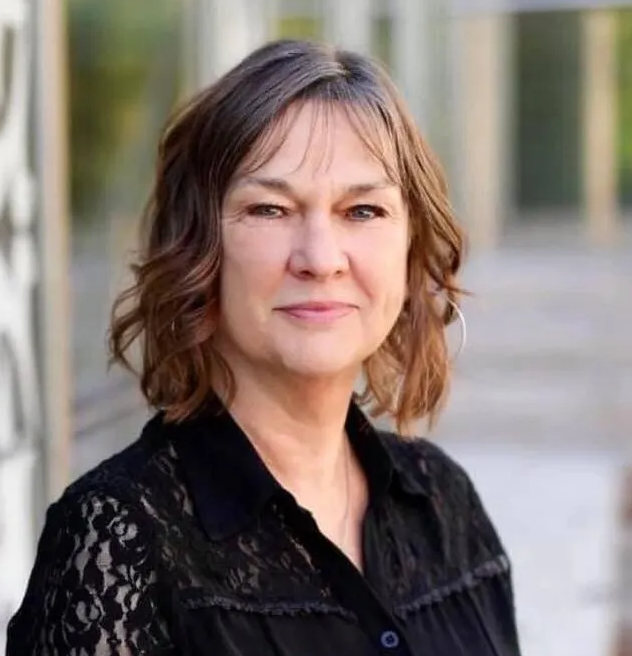Mere days from the official release of her glorious debut, we are delighted to have author Susan Wadds join us to answer a burning question about her much-anticipated, super salient novel, What the Living Do (Regal House Press, 2024).
Welcome, Susan!
Q: What the Living Do offers an intense, complex, and incisive look at questions and concerns surrounding women's reproductive rights (among other things). Was this something you set out to address in the novel, or was it something that emerged as the story developed?
What the Living Do by Susan Wadds. Bring it home!
A: Story elements tend to emerge organically. I often begin with an idea, or as Sherry Coman says, a sacred image. In the case of this story, it began with an image and a dilemma. My image was a blond woman holding a Stop/Slow sign for a road crew. I wondered who she was, how she came to the job, how it was to work in that environment, and then thought, what if she didn’t just hold signs but worked side-by-side with the men? Who would that woman be? The dilemma driving the story ties into the theme of reproduction—something I’d wanted to write about for a long time.
In this story, the protagonist has left a toxic relationship in which her partner refused to father the child they conceived. Raising a child with no partner and no father was not a life she wanted for herself or for a child. Abortion seemed to be her only option.
One of the conflicts in the story involves her closest friend who has conceived twice within her marriage but has miscarried both times. Although I didn’t set out to have this particular dynamic play out, a situation in my life offered itself to serve the story. My dearest friend had been desperately and unsuccessfully trying to conceive and I, without trying or wanting to, conceived. In our case it didn’t cause a rift, but it inspired me to use a similar tension around two women’s disparate lenses on motherhood. One, who has lost babies judges the other who willingly “discarded” one.
In What the Living Do, the weight of guilt for the death of her three-year-old sister isn’t the only reason Brett would rather not have children. She believes that she cannot “bear” children--it’s a dangerous world and there are predators out there, so not only does she feel unworthy to be a mother, perhaps it’s better not to bring a child into a dangerous world where they may be exploited.
To answer the question simply, I didn’t think about “rights” per se as I headed into the narrative, and that may have to do with the medical system with which I’m familiar; one where a safe abortion is available to those who need such an intervention. Luckily, the protagonist’s dilemma didn’t involve having to choose between an unsafe abortion and single motherhood.
Later in the story, Brett encounters a male doctor with a shockingly cavalier attitude toward abortion, a scenario based on personal experience. So, as I said, many of the elements present themselves organically as I write, many of them inspired by my own experienced events and encounters. I think what I want to say here is that I didn’t set out to “make a point” but rather to tell a story about a headstrong woman mired in guilt and grief finding her way back to wholeness and health.
Author Susan Wadds.
Winner of The Writers’ Union of Canada’s prose contest, Susan Wadds’ work has appeared, among others, in The Blood Pudding, Room, Quagmire, Waterwheel Review, Funicular, Last Stanza, and carte blanche magazines. The first two chapters of her debut novel, published by Regal House Publishing, “What the Living Do” won Lazuli Literary Group’s prose contest, published in Azure Magazine.
A graduate of the Humber School for Writers, Susan is a certified Amherst Writers and Artists (AWA) writing workshop facilitator.
She lives in Kawartha Lakes in the former Dalton township by a quiet river on Williams Treaty Territory in South-Central Ontario with an odd assortment of humans and cats.



